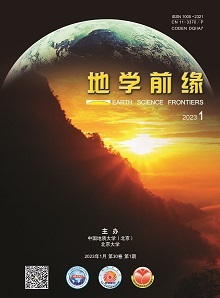The Gonghe Basin is located at the junction of the South Qilian, East Kunlun and West Qinling orogenic belts in the NE Qinghai-Tibet Plateau where high temperature Hot Dry Rocks and multiple sets of source rocks are discovered. However, without a clear understanding of the genesis, resource potential and distribution pattern of geothermal and oil and gas reservoirs, it is difficult to carry out accurate resource evaluation and effective resource exploration and development in the Gonghe Basin. In this study, the regional tectono-sedimentary sequences, deep tectonic architecture and tectonic deformation are systematically analyzed, the dynamic process of basin evolution is discussed, the main factors controlling reservoir formation in geothermal and hydrocarbon accumulation are analyzed, and the favorable distribution zones and exploration directions are proposed. In the Gonghe Basin, the periodically active Wahongshan-Wenquan, Tanggemu, Waligong and Duohemao NNW-striking dextral strike-slip and thrust faults and the Qinghai Nanshan NWW(E-W)-striking thrust and sinistral strike-slip fault intersect (or in tangent) in the same or opposite direction, and the superposition of the intersecting faults and mantle upwelling result in the unique strike-slip stretching environment during most of the Cenozoic, and control the distribution and properties of seven tectonic units featuring faulted-depressions and uplifts. The Gonghe Basin region experienced six stages of evolution: 1) Development of main basement rock in the Early-Middle Triassic in the northern parts of East Kunlun forearc basin and volcanic arc belt; 2) Collision orogeny and formation of folded basement in the Late Triassic; 3) Post-collisional extension and development of local continental facies in prototype basin at the end of Triassic; 4) Formation of local faulted depressions in the Jurassic-Cretaceous under regional extension; 5) Development of strike-slip pull-apart and faulted basin in the Late Paleogene-Miocene; and 6) Development of intracontinental foreland basins in the Pliocene to the present. During the Meso-Cenozoic periods three large tectonic-sedimentary sequences and eight secondary sequences are formed in the Gonghe Basin, along with the developments of the deep-water shelf and carbonate platform facies, igneous facies, as well as the multi-cyclic terrestrial sedimentary sequences of the alluvial-fluvial, littoral-shallow lacustrine and semi-deep lacustrine facies. The superimposed evolutionary processes record the basin response to the near field effects of the northward subducting, retraction-subducting, and post-collisional extension of the Anemaqen Paleotethyan ocean slab, and to the remote effects of the opening, subducting and closure of the Neotethyan Ocean and the India-Eurasia continental collision.
The unique tectono-sedimentary evolution results in the favorable oil/gas and geothermal energy resources conditions in the Gonghe Basin, where three sets of hydrocarbon source rocks are developed in the Lower Jurassic, Lower Cretaceous and Neogene, and they can—pending further fine correlation, play evaluation and favorable trap confirmation—form three favorable oil and gas exploration strata. The five-layer deep structural architecture of the Gonghe Basin and its genetic dynamics reveal the basin’s favorable geothermal resources potential. Mantle upwelling leads to the upward movements of each layer in the crust, which results in the short-path, multi-source heating action under the strike-slip and extensional development environment of the basin. The Hot Dry Rock geothermal reservoirs are formed in the basin’s fault intersection zones. For the medium-high temperature reservoirs the main controlling factors are: mantle upwelling and lower-middle crustal partial melting respectively providing the regional and local heat sources; continental margin arc and collision-related granitoids, superimposed with multi-stage fault, fracture and hydrothermal activities, controlling the heat storage and heat conduction; and the thermally stable overlying ultra-thick fine-grained sedimentary rock layers providing the reservoir caps. These factors may also control the heat source and heat conduction in shallow hydrothermal geothermal reservoirs. This study provides a reference for the understanding of geothermal reservoirs in small-medium size intracontinental basins with locally high terrestrial heat flows.

